 Originally published February 20, 1998, in Comics Buyer’s Guide #1266
Originally published February 20, 1998, in Comics Buyer’s Guide #1266
“Only half a million copies.”
It was some years back, during the pinnacle of the sales boom for comic books. There was an editor walking around the offices at Marvel Comics, and he was sorely distressed, angry and disappointed.
You may ask, Why was he so angry?
Go ahead. Ask.
I’m not going to tell you unless you ask. Come on. Say it out loud. Say it with me: Why was he so angry?
(Having learned your lesson from last week’s column, I can only assume that you have very wisely said out loud, “Why was he so angry?” thereby getting some rather odd looks from anyone who might be nearby you. Don’t worry about them. They’re probably working for the Starr Chamber, trying to determine whether or not you had an affair with Bill Clinton. Just glance their way, nod, smile, and make no sudden movements, and you should be fine. Where was I? Ah yes.)
Marvel had just gotten in the solicitation numbers on some new Punisher title. Might have been the first issue of a limited series, or perhaps it was Punisher’s Technical Journal or Punisher’s Weapons Manual or Punisher’s Connect-the-Blood-Splatter Fun Book or whatever. Point is, it was a Punisher book.
The editor was upset and disappointed because the numbers had only come in at half a million copies. Those of us with any memory for the Way Things Used to Be were somewhat flabbergasted. Only half a million? Only? When I first started in the Marvel sales department, the X-Men titles were the absolute crème de la crème of Marvel as far as sales were concerned. Indeed, they were the industry gold standard, the number against which Capital City constructed their entire ordering index. If you ordered 100 X-Men, then you were expected to order proportionately on all other titles, for both Marvel and DC. And even at that giddy high-point, X-Men sold way less than half a million.
But we had reached a point where sales of half a mill on what many considered a second-tier title (albeit one of the stronger ones) was expected to perform better than Marvel’s gold standard.
It was at that moment that I knew we were in serious trouble. That one moment that told me expectations for what comics could do, sales-wise, had spiraled out of the stratosphere.
I am something of a pessimist by nature. It’s a safer way to be, really. If you’re an optimist, you’re perpetually disappointed when things don’t pan out and, consequently, can only hope that things will be better next time. But as a pessimist, you’re covered both ways. If things don’t work out, then you expected it, and are satisfied to be right. But if things do work out, then you’re pleasantly surprised. It’s a no-lose situation, really.
Upon hearing of that editor’s pronouncement, I immediately thought to myself, “This isn’t going to last. It can’t last. That’s not a healthy attitude to have, and it’s going to come back to bite everyone.” Which is indeed exactly what happened.
And now sales are dropping and continue to drop across the board, and everyone is wondering when, or if, it’s going to level off. The thing I hear the most discussion about is how we have such a dwindling audience.
I’m not so sure about that.
I don’t think we ever had a particularly large audience.
What we did have was an audience which was willing to spend X amount of dollars for Y amount of entertainment. Yes, we had an influx of collectors who then vanished as well, but in some respects the field of comics collecting is somewhat like Oz: People tend to come and go quickly here.
The thing is, we (that is, the publishers and creators) don’t sell books to readers. A lot of people forget that. We sell books to distributors—well, distributor, in the case of the ID market. And the distributor sells them to the retailers, and it’s the retailers who get them to the fans.
Has anyone noticed that the downward spiral of sales is directly related to the shrinking of the number of distributors? I think a lot of people have forgotten just how much care and feeding of retailers, on an individual and regional basis, was required for the direct market to really thrive. America loves big things, the bigger the better, and we tend to regard small as useless and less than impressive.
But the bottom line is that we were doing a hëll of a lot better as a whole in terms of market growth when we had a lot of smaller distributors, each sparring with each other and competing for sales, than we are now. I’m saying that the personal touch, which is simply impossible for one large distributor to replicate no matter how hard it tries, might have had more to do with the health of this industry than we previously thought. It meant that the needs of individual retailers could be met and attended to, that reorders were easier to come by, that obtaining books was far easier. Now everyone is treated in the same monolithic fashion, and that can become both problematic and unfeasible.
I used to have four comic book shops in my immediate area. Now I have none. The audience may very well still be there, but with no convenient place to pick up their books, there’s no way for them to continue with the hobby. The last to go, a store called “Destiny Comics” (ironically appropriate) closed up shop when the store owner literally could not afford to stay in business. Shipping costs and decreased discounts had so eaten into his profit margin that remaining afloat wasn’t feasible.
Small doesn’t work anymore. Subtle doesn’t fly. Books such as Bone or Sandman, if launched in today’s market, might close up shop after just a few issues, unable to deliver what the publishers are looking for.
And what are the publishers looking for?
Whammies.
Not my term. It’s a movie-making slang referring to big action moments: Explosions, mostly, or at least explosive moments. One movie maker said that what he looked for in the scripts he directs are a series of whammies, followed by bigger whammies, and then one big gigantic whammy, and then roll the credits. He didn’t care about plot, characterization, or anything else. Just whammies.
I think to a certain extent it’s the mindset that’s been fostered in comics as well. Rather than seeing the audience down slide as a result of economics, hampered distribution, and lack of outlets (to say nothing of the huge price tags most books carry now), the publishers feel that it’s solely because comics aren’t being loud enough. Big enough. Big is all that matters. If you don’t have half a million sales, you’re a failure. You need more whammies.
Kill the character. Blow the character up. Bring him back. Make more of him. Change him beyond recognition. This is what matters. This is what sells.
Except it isn’t, is it?
The events get bigger, the crossovers get more cross, and in the meantime, sales are dropping off. If a whammy goes off in a forest and no one is around to hear it, was there a whammy?
How to jack up sales, you wonder. How to make the bigger explosion. Find the big whammy. What magic spell must be cast in order to lure back the readers—the readers whose stores have closed so they can’t find the books anymore. Those readers. The readers who are shell shocked by whammies.
Those readers. The readers who perhaps feel so overwhelmed when all books tie together, because they can’t afford all the books, and so give up and walk away. Americans are an arbitrary lot and don’t like being told what to do, and if they feel they are under an onus to purchase certain titles, they will reflexively stop. They buy because they want to, not because they are told to.
What do we do, then?
Nothing.
That’s right. Nothing.
Enough with the whammies. Enough with the big events. We’re caught in a downward spiral of can-you-top-this. It’s like all the revelations about Clinton’s sex life as investigators come up with one thing after another. And Americans are saying, “The hëll with it, I don’t care.” America’s apparently insatiable appetite for scandal has apparently, suddenly, been sated. We’re tired of finding out that everyone is flawed. We know that. The point is made.
Same thing with comics. Enough already with the cosmic crossovers and whammies. Live with the smaller stories and the smaller sales. How will sales turn around? They probably won’t, not for a long time. Not until there’s more stores, or more outlets for comics. If there’s no place to sell them, then there’s no one to order them. If there’s no one to order them, sales don’t go up. This isn’t brain surgery here. And increased whammies just cause readers to clap their hands over their ears and say, “La la la, I’m not listening.”
And by the way, that director who believes in whammies? His last couple of films tanked.
(Peter David, writer of stuff, can be written to at Second Age, Inc., PO Box 239, Bayport, NY 11705. His new heroes are Tom Brevoort and Len Kaminski who, in a single panel in the upcoming Marvel 2099 one-shot, undid all the stuff that he hated in the last two issues of Spider-Man 2099.)
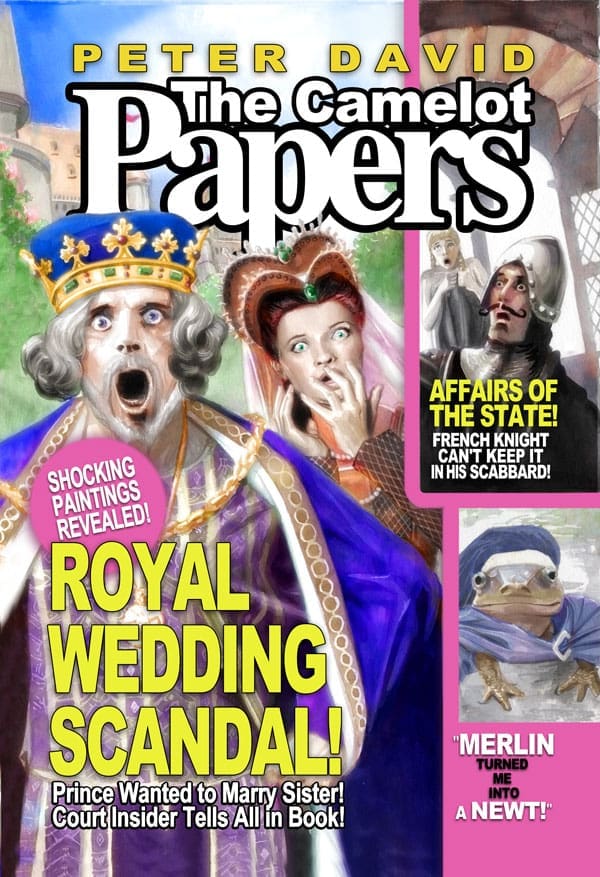
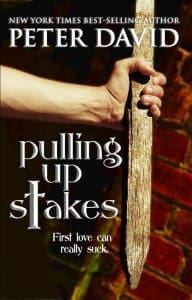
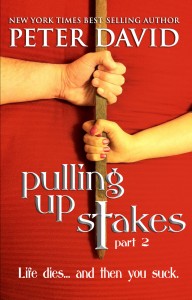
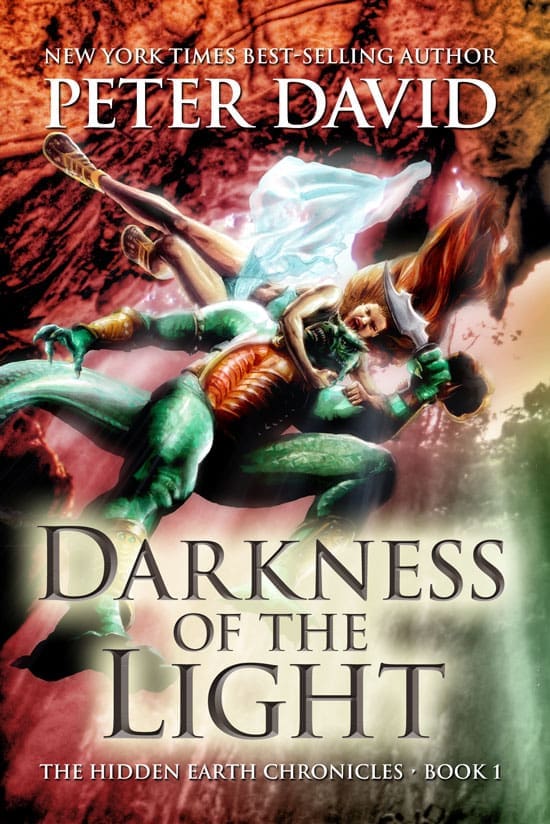
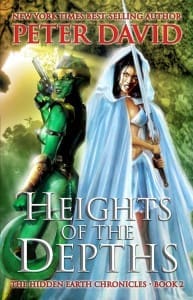
Interesting column Peter. As is often the case, I have to double-check the date to see that it was written in 1998 and not 2012. Perhaps not surprisingly, the ‘whammy’ mentality has now consumed the big two companies to the point where one of them has re-launched the entire company thus creating a company-wide whammy. From my perspective, I have zero interest in any crossover that is going to cost me 50 bucks or more only to leave a bad taste in my mouth. As a result, the once-weekly trip to the comic book store has now dwindled to once a month or less.
.
I also wonder if the price of comic books has something to do with the drop in readership. I don’t mean that in the same way as the crabby old guy in front of you in the grocery store who talks about how a gallon of milk cost a nickel during the old days. But as Mark Evanier I think, pointed out in his blog a while back, you used to be able to buy every single Marvel book on the rack including the war books and maybe the western books, for a couple of dollars. Nowadays, the amount of money one has to spend in order to buy every Marvel book is phenomenal. And for young readers, it now becomes a case of different priorities. For the price of two three comics, you can go to the movies, for the price of four or five, you can buy a brand new DVD. And why buy four issues of The Avengers Unchained or whatever the new book will be called, when you can buy the Avengers Blu-ray for the same price. The result is you don’t get a casual buy-in anymore, therefore the only thing that will attract new readers is the latest whammy event. And so it goes…
No-lose indeed.
Heard the tail end of a psychologist being interviewed on radio at least ten years ago, don’t recollect his name, but he spoke about a study he’d done of optimists and pessimists. He listed the advantages of optimism. Longer, happier, healthier life and career and so on. Quite the list. The radio guy asked him didn’t the pessimists have anything going in their favour? You could practically hear the psych frowning as he hesitated before admitting “they tend to be right.”
Peter, you’re definitely prescient. A lot of what you wrote back then resonates today with me. I used to be a die-hard X-Men fan and collected just about every X-book I could afford as well as a few other titles. Now with event after event, increasing prices, double shipping and having issues that are ridiculously decompressed, I’ve dropped around 95% of what I used to buy and a few I’m just waiting until the last issue ships before the reboot (you’re not fooling anyone, Marvel) before I cancel them as well.
I now focus more on the occasional backissue and works from the other publishers and creator-owned works. It’s really sad when someone who works at the comic shop I frequent told me how he has to steer kids away from a lot of what the Big Two is publishing since there really isn’t much being made for the younger reader and he doesn’t want to have to deal with parents flipping out.
“Now with event after event, increasing prices, double shipping and having issues that are ridiculously decompressed, I’ve dropped around 95% of what I used to buy”
Same here. And in my case, it’s not a question of finances. My income has steadily increased over the years, and my comic consumption has decreased to the point that I’m spending less on comics than I ever did. The content (I’m no fan of decompression either), the pricing, the relentless events, and the constant tie-ins have simply driven me away. I buy more independents and standalone titles, and therefore my consumption of the Big Two is almost nonexistent.
And every time they cancel a title I liked (most recently Avengers Academy), I don’t bother finding another to replace it. If you’d told me 20 years ago that I wouldn’t be reading any of the flagship titles from either Marvel or DC, I’d have laughed at you. But I don’t. With AA gone, X-Factor may be the only Marvel title still on my pull list. No, wait, Daredevil is still on there. When the new 52 launched, I gravitated to the underdog titles, and as those get canceled, I don’t pick up their replacements.
Ditto, Bryan, regarding my income going up and my comics buying decreasing. Price only comes into the equation when I think of how much content/entertainment am I getting for the price and the answer has been, unfortunately, “not much”.
More money towards independent comics, some backissues and also for original art and just about anything besides the next mega-crossover event which can be summed up as “This will change everything! Well, for about a year when we’ve driven away loyal readers and then we’ll bring everything back to status quo”.
Head’s up; a bunch of characters from Avengers Academy are going to be the leads in Avenger Arena. It might be worth taking a look at it (also, Young Avengers, which is going to span the entirety of Marvel’s teenage superheroics).
And yet…DC’s big reboot/relaunch/re-animation/whatever seems to have worked pretty well for them after one year. I’m surprised, too. As for “events”, as “whammies” are currently known, many an editor has said, “We’ll stop doing them when you stop buying them.” or words to that effect. Do the publishers really know if they have any effect on long-term readership, positive or negative? Are there enough Faithful Long-Time Readers out there for them to care about any more?
And thank god sum 14 years later we’ve finally learned our lesson. It’s not as if Marvel just finished a cosmic crossover milking the teet out of an idea Chris Claremont had over 30 years ago. Let alone pulling this crap off annually and forcing characters to act in unnatural ways to progress plot points.
Luckily you don’t see DC pulling off Whammies, like say bringing back 2 dead guys sticking them in costumes then contriving sum gimmicky reality altering retcon thereby justifying relaunching your entire line with a full slate of issue # 1’s.
While there at it, they could save sum time and just stick a holographic on a piece of dog turd, slap a #1 on it, with the tagline “you are nothing moar to us than cashholding meatwads” and be done with it.
I stop reading comics because of the stage in life I am in. I am not saying I am too old or too mature for comics. I will never be too mature for anything. I just do not have time. With work and kids my entertainment time is so limited I rather use it for something I can do with my family like TV, movies or even boardgames. I still read books though, but now it takes me 3 to 4 weeks to read just one book.
I still love comics and superheroes, but I’ve lost that kind of character loyalty that makes you wanna know what is currently happening to Spider-Man or Batman or whoever in their monthly comic. And I reckon I lost it about the same time these columns were first published.
Occasionaly I make returns and try to catch up on what is happening in Marvel/DC today, but these instances are becoming rarer. I may still like specific writers, but even my favorites suffer in the current heavily editor-driven Marvel/DC. Everything is written for the trade, and everything is written with some mega-crossover in mind, and really, it’s the sort of garbage that diminishes the work even of great writers, and many guys working for Marvel/DC are not great writers.
Even way back when, I’d just shake my head when some PAD comic I was following had to have one issue co-opted by the latest useless X-crossover. Now, 15 years later, it’s more of the same. Boy, do I feel old!
Life is too short. Like Tony, it’s not that I consider myself too mature or anything, it’s just that sometimes it comes a time when you realize that life is short and why are you wasting time reading garbage just out of misplaced company loyalty and childhood nostalgia?
If you really have to indulge in nostalgia, it’s far more rewarding to re-read Claremont and Byrne’s X-Men issues than the uptenth iteration of the Phoenix’s storyline in Avengers versus X-Men.
On a more positive note, I really hope that digital distribution will make a difference here. I now buy all my monthly issues digitally: I feel a bit guilty about the comic shop losing sales, but I’m much more willing to try new stuff when I know that physical storage isn’t an issue.
Also, I’m currently catching up on about 5 years of Spider-Man comics through MDCU (much cheaper than buying the issues individually), and the issues I’ve enjoyed most are the ones that have nothing to do with big crossovers, e.g. when he got hammered by the Black Cat’s bad-luck powers. Having said that, I certainly recommend PAD’s run on F’n Spider-Man for good Spidey comics which are linked to bigger events (i.e. Peter unmasking and the supporting cast reacting to it).
John, some of te digital distribution models keep retailers in the loop. Not sure of the specifics, as I still prefer physical copies to digital, but, by way of example, the store I go to has some sort of partnership with DC that, if someone buys the digital book via the store’s web site, the store gets a cut of the sale, just like a physical copy.
–Daryl
For another look at this time in Marvel’s history, see this excerpt from “Marvel Comics: The Untold Story” at http://www.tcj.com/sean-howe/
“When we got the orders in on Silver Sable,” said Lou Bank, “and they came in at only half a million units, Tom DeFalco said to me, ‘That’s it, that’s the beginning of the end!’ I thought, ‘Gøddámņ, half a million units!’ At that point we were canceling titles that came in below 125,000, but it wasn’t so long before that we’d never seen a comic sell half a million. How could Tom say this? It didn’t sell the million you wanted, but . . . half a million units! But he was sure right. That was the beginning of the end.”
“It was like cocaine culture without the drug use,” said editor Tom Brevoort. “Everyone was getting more and more hopped up on this explosion of sales. You’d launch a book, and editors would be lamenting the fact that, ‘Oh it only sold half a million copies.’ Five years later, they’d be thanking their lucky stars.”
Those readers. The readers who perhaps feel so overwhelmed when all books tie together, because they can’t afford all the books, and so give up and walk away. Americans are an arbitrary lot and don’t like being told what to do, and if they feel they are under an onus to purchase certain titles, they will reflexively stop. They buy because they want to, not because they are told to.
And that’s pretty much what I did. I think it was X-Cutioner’s Song that finally made me throw up my hands and walk away. I was tired of it. I was tired of walking out of the comic store with a stack of books in order to figure out what was going on with the three or four characters I actually cared about. There wasn’t a money tree in my college courtyard, and I simply wasn’t willing to invest that chunk of my discretionary income into crossovers. And it seemed like crossovers were all there were– a minimum of one a year, for several months at a time. And I never went back. I went to Legends of the Dark Knight, which I could actually keep up with.